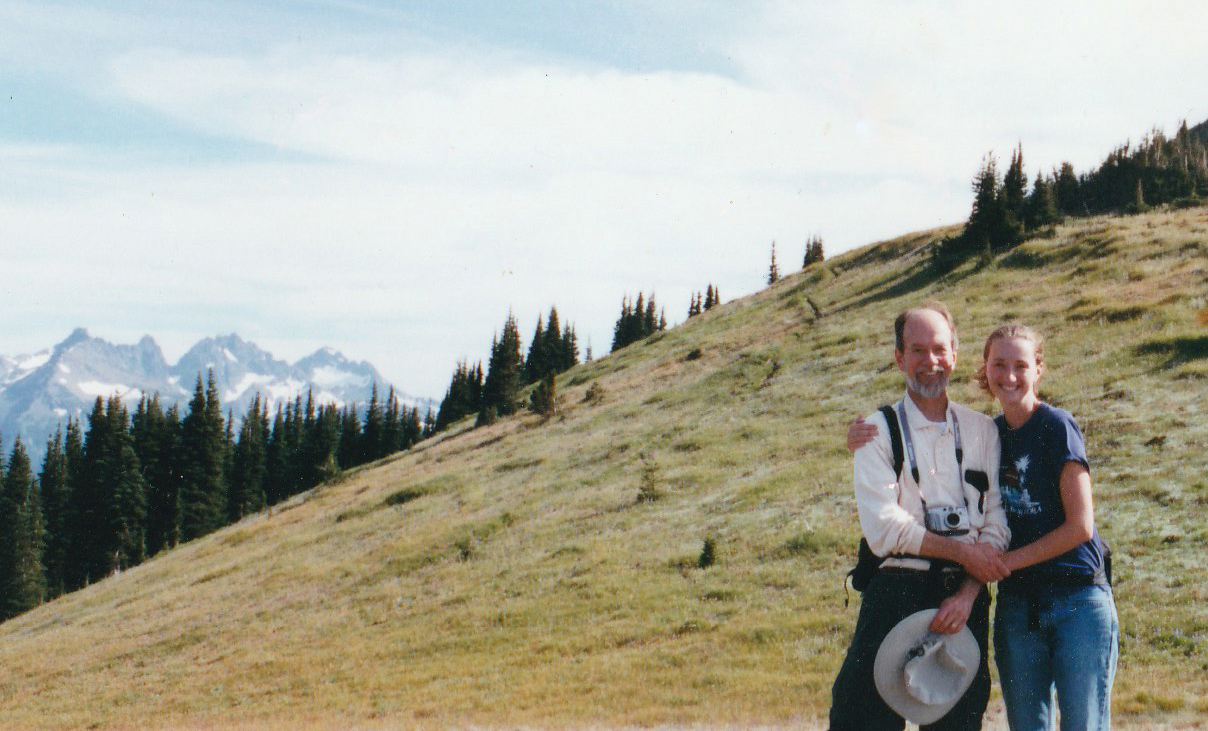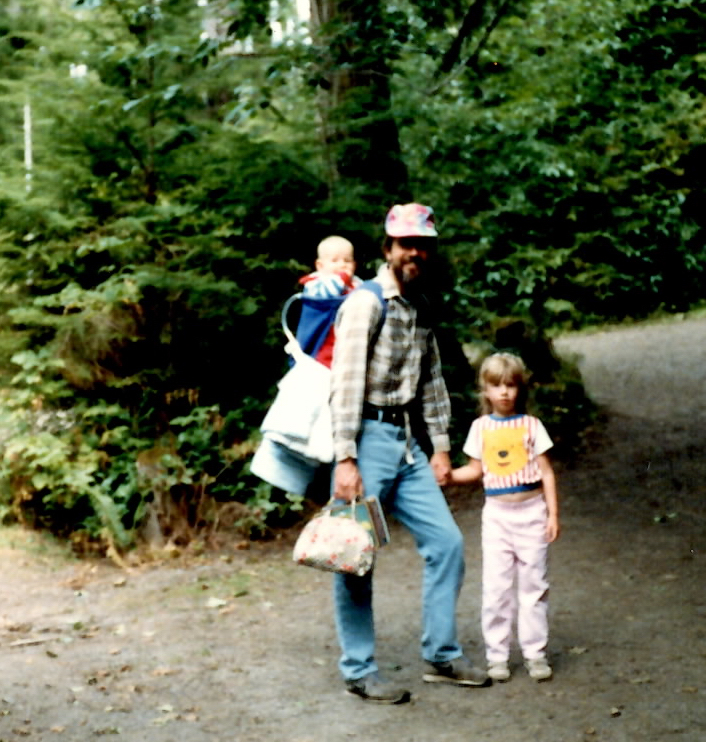Waste in the Wild 101

Waste in the Wild 101
By Kate Blazar, Founder of Animosa
I spent my childhood playing in the wild. Raised in a log house on the Olympic Peninsula, I’ve always felt most at home among mossy forests, rocky beaches, and steep river valleys.

Kate with her dad
From the time I could walk, I was an explorer: hiking, camping, backpacking, kayaking, and otherwise playing outdoors.
Around age 5, I declared myself an eco-warrior. Babysitters would ask what I wanted do for the afternoon, and my response was always the same: “litter cleanup!” My dad and I frequently went for long beach walks and picked up as much trash as we could find and carry. I even circulated environmental petitions on the Kindergarten school bus.
I grew up hiking and backpacking with my dad, and he taught me the basics of outdoor safety and hygiene, including instructing me where and how to relieve myself in the woods. During my adolescent and teen years, I was disgusted and mortified when he periodically reiterated the importance of pooping in a hole.
My dad taught me not only to Leave No Trace, but also to proactively pick up trash left by others. Unbeknownst to either of us at the time, the outdoor ethos he instilled in me would guide my professional life and define me as an entrepreneur.

Kate hiking in the Olympics with her dad
My startup company Animosa makes gear for adventurous women. Animosa’s first product, the Go With Your Flow pack, is an outdoor menstrual hygiene kit designed to hold period trash in the absence of a waste bin. The pack is intended not only to make it easier for women to explore freely while on their period, but also to reduce the amount of period trash buried and littered outdoors.
Looking back on my long history of picking up and packing out trash, it makes sense that this has become a focus in my life. Nevertheless, I am amused that my entrepreneurial journey has made me a de facto expert in outdoor waste of all sorts, including period waste. My 11-year-old self is cringing right now.
Waste in the Wild 101
Leave No Trace is the basic guiding principle for anyone spending time outdoors, and it seems simple enough: don’t leave trash behind, don’t damage anything, leave what you find (unless it’s litter, in which case you can pick it up!), and dispose of waste properly.
But proper waste disposal can be confusing- it requires some basic knowledge and preparation. What should be packed out with you, and what’s okay to leave behind? How should you pack it out? Here’s a breakdown:
If it isn’t produced by your body, it shouldn’t be left behind.
This includes toilet paper, leftover food, tampons, fruit cores/peels, cans, wrappers, et cetera. If you bring it with you outdoors, don’t leave it behind! Litter in nature is unsightly and it encourages others to follow suit. It also takes a long time to biodegrade (or never does), hurts wildlife, and usually ends up in waterways (rivers, lakes, and oceans).
When Nature Calls…
- Either forego the TP or pack it out with you– never bury or leave toilet paper behind! If you need to wipe, you can use a leaf (nothing poisonous or prickly!), moss, or a smooth rock – or bring TP/wipes, but be sure to pack them out in a ziplock bag or Go With Your Flow pack (it comes with wipes, and it discreetly stores used TP, wipes, and/or period products). Some women use (and re-use) a “pee rag”–a bandana or scrap of cotton fabric– which is a great way to stay clean on longer trips (especially backpacking). Proudly fly and dry your rag on the outside of your backpack.
- When you need to poop, find a spot at least 200 feet from campsites, water (lakes, creeks, ponds, rivers) and trails. Dig a hole at least 6 inches deep and cover the hole back up when you’re done. If you don’t have a tool for digging a hole, you can use a rock, stick, or the heel of your shoe (use your heel like an excavator to dig down and scrape the soil up toward you). Some National Parks and other popular areas require that you pack out poop in special poop bags or camp toilets, but these places usually have plenty of information available to help guide you.
- When you’re on your period, pack out your menstrual trash (used tampons and pads, applicators, wrappers, etc) in a Go With Your Flow pack or ziplock bag. If you use a menstrual cup, do the same thing you would do to poop: dig a 6-inch hole and bury the blood, but don’t bury TP or wipes (dispose of those along with your menstrual trash). Always wash your hands (if you have soap and water) or use wipes and hand sanitizer afterwards!
Learn more about Leave No Trace Principles through lnt.org->
Photos courtesy of Kate Blazar.
Kate Blazar is a lifelong explorer and founder of Animosa. Learn more on the website and by following along on Instagram.
Be the first to comment